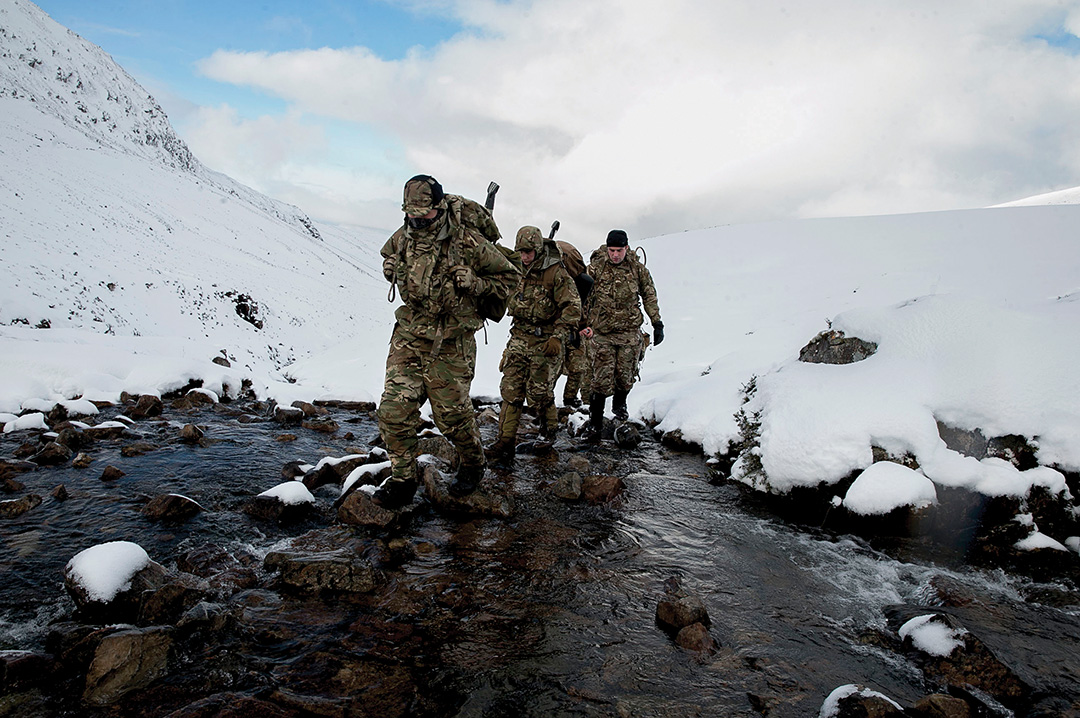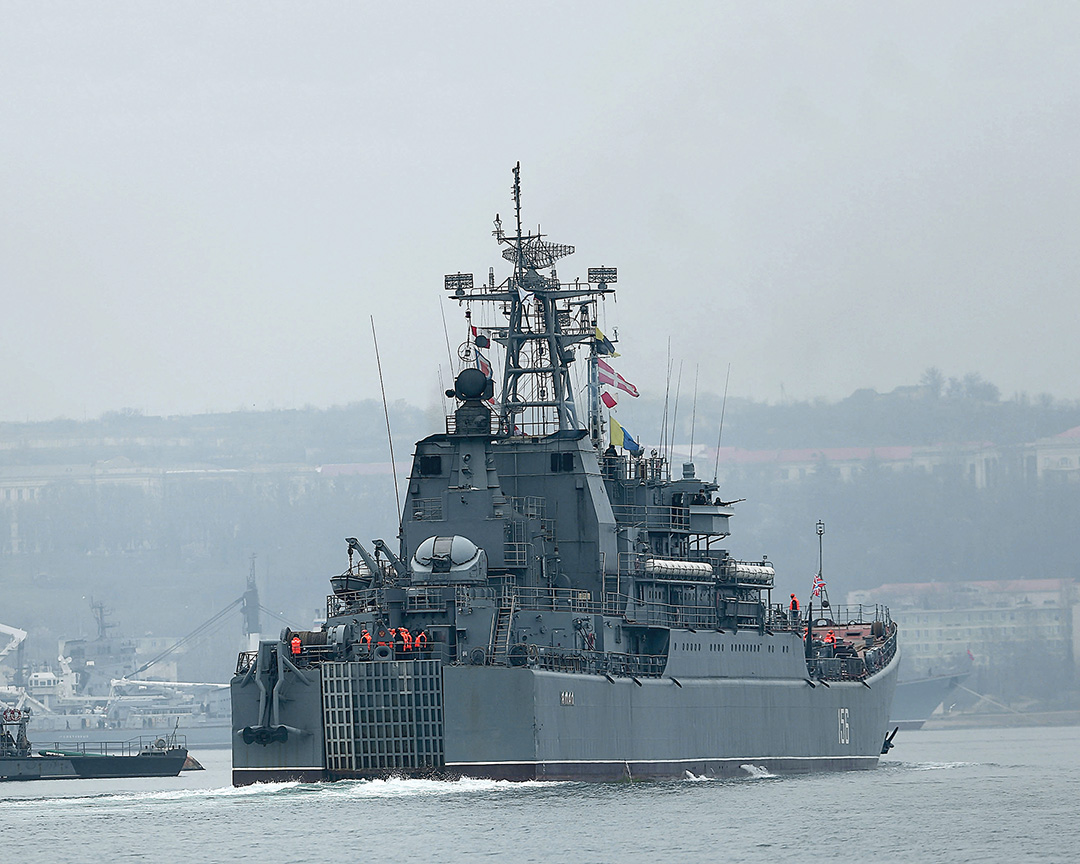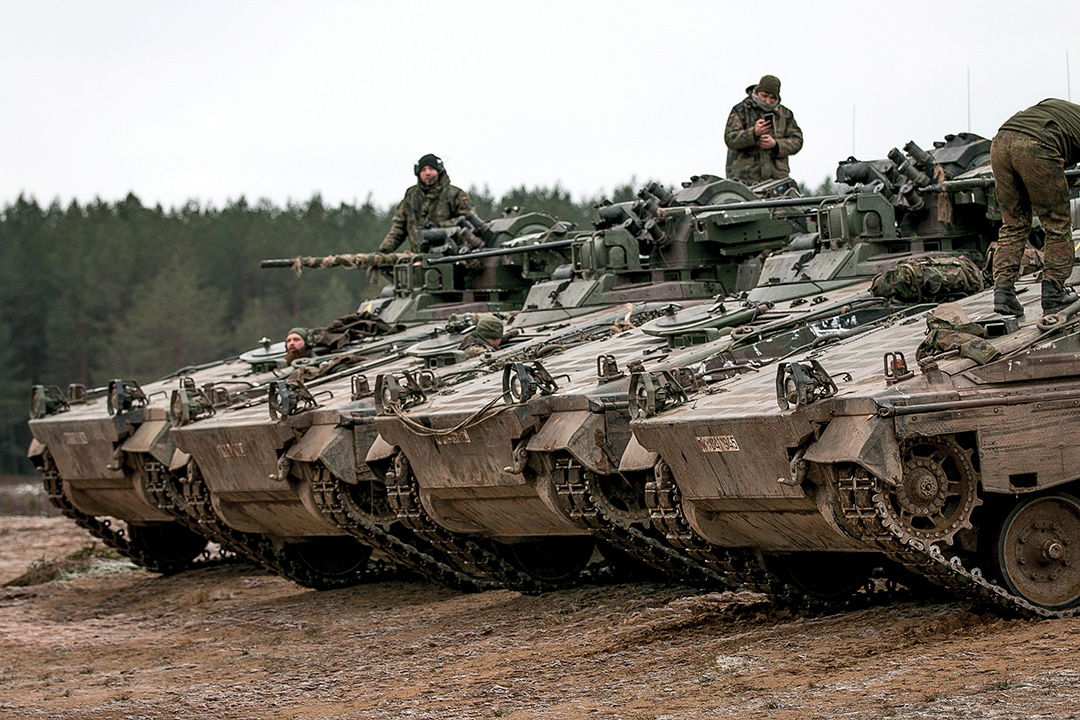Rethinking NATO defense strategies in Eastern Europe
By Maj. Josh Passer, U.S. Army
Is the United States military meeting its goals in Europe? The U.S. trains its military leaders to develop plans with achievable goals that can be measured. In this manner, resources can be allocated correctly, and the plan can be adapted as situations change.
In 2014, the conflict in eastern Ukraine and Russia’s illegal annexation of Crimea dramatically altered the U.S. focus in Eastern Europe. The military goal is now deterring overt, hostile Russian military action in Europe. The U.S. Department of Defense defines deterrence as “the prevention of action by the existence of a credible threat of unacceptable counteraction and/or belief that the cost of action outweighs the perceived benefits.”
For now, deterrence seems to have been achieved, because Russia has not moved overtly against any other European — much less NATO — country. There are a number of contributing factors to this successful deterrence, including the increased U.S. and NATO military presence in Eastern Europe, and sanctions and other economic factors. Or, for now, Russia does not view the prospect of minor territorial and resource gains as worth risking another global war, though only Russian President Vladimir Putin knows for certain what Russia’s strategy is.

Though there have been no new overt military actions — such as the downing of Malaysia Airlines Flight 17 over eastern Ukraine in 2014 — the threat of Russia’s new form of hybrid warfare remains. The playbook is similar to past Russian/Soviet Union schemes with variations enabled by new technology. Here’s how they can be summarized:
Closely watch countries within Russia’s sphere of influence that have significant ethnic Russian populations.
Wait until — or provoke — the government of one of these countries to suppress or discriminate against their Russian population.
Condemn those actions and gain sympathy in Russia for the plight of ethnic Russians in that country.
Call for the other government to cease its suppressive actions while supporting the ethnic Russian population with both legitimate aid and undercover agent provocateurs.
Force the other government to take overt actions against its ethnic Russians with more restrictive legislation and/or direct police action.
Use Russian operatives within the newly rebellious area to escalate conflict.
Compel the other government to either respond with more force or allow rebellious areas to break away (the most likely scenario, because most countries dislike giving up territory, is the government deploying military and/or more police to suppress the ethnic Russian population).
Intervene militarily to “defend” ethnic Russians against the “aggression” of the other government.
This chain of events occurred in Georgia in 1921 and 2008, in Moldova’s Transnistria region in 1992, and in Ukraine in 2013-2014. The most extreme outcome is complete territorial control, such as in Georgia in 1921 and in Crimea in 2014, followed by partial territory control, such as in Abkhazia and South Ossetia, and lastly a frozen conflict such as in eastern Ukraine or Transnistria. Each of these outcomes is a net gain for Russia, increasing its regional power and blocking these countries from potential NATO membership.

Russia has also proven adept at pushing propaganda and influence through many media formats. During the height of the Ukraine conflict in 2014, there were numerous instances of blatantly false reports in Russian media. In one notorious example, a reporter conducted several interviews with an apparently injured man for various news sources, with each interview providing a different name and back story as to how and to what extent he was injured by pro-Ukrainian forces.
But Russia has also had information technology failures. Young soldiers forgot to turn off the geo-locating services on their phones or other digital devices when checking in on social media, revealing that they were inside Ukraine despite Russia’s claims that it had no military presence there. Russia quickly dissembled, calling these soldiers “volunteers” who were helping the pro-Russian rebels — volunteers who just happen to have all their Russian-issued military equipment with them while on “vacation,” fighting a war.
This form of hybrid warfare and media manipulation is difficult to counter through conventional military means, and Russia’s actions in this realm do not seem to be deterred by the increased NATO military presence in Eastern Europe. An additional increase in military personnel and establishing permanent bases in vulnerable Eastern European countries could give their governments the security to counter anti-Western propaganda. More positive interaction between NATO forces and local populations will decrease the effectiveness of Russian misinformation campaigns.
The internet — and social media in particular — has become a favorite medium for Russian propaganda. Russian interference in the 2016 U.S. elections can be viewed as a variation from the Russian influence playbook. While the U.S. lacks a significant ethnic Russian population to incite, its growing political divide has proven easy to manipulate, presenting an opportunity for Russia and Putin. Evidence shows widespread use of new technology to widen the divisions in the U.S. Russian hacking of the Democratic National Committee emails, use of bots on Twitter and Facebook and the purchase of ads on Facebook point to a new form of digital and information warfare that the U.S. government has failed to effectively counter.
But the U.S. must resist the knee-jerk reactions of censorship and overregulation. Premature crackdowns on affected industries or information technology (IT) sectors play into the Russian playbook. Overbearing government restrictions lead people to find alternatives, and digital alternatives are increasingly provided by countries such as China or Russia, which clearly use their IT systems to increase control domestically and to boost their influence abroad. Their commercial IT services may work for Western users while feeding information back to hostile governments for exploitation. These countries seek a higher profile on the world stage. The U.S. must invest in and continue to foster the IT sector in an open and free manner and enhance cooperation with others around the world, maintaining a strong presence in global affairs and engagement in events outside its borders, and in the cyber realm. This is another sector that conventional military structures are struggling to address. For the U.S. and its allies, a strong digital front to protect assets from attack is as important as tanks on the ground in Europe.

After the illegal annexation of Crimea, the U.S. moved to reassure friends and allies in the region that it would be ready and able to defend them from Russian aggression. The U.S. allocated $1 billion to the European Reassurance Initiative in its first year, and has increased its commitment each subsequent year to a projected $4.7 billion in 2018. That money has funded construction efforts to improve infrastructure for military logistics and multinational exercises across NATO’s eastern flank.
These exercises include U.S. Army Heavy Brigade Combat Teams, Army Combat Aviation Brigades, and Air Force and Naval assets, many of which are stationed permanently in the U.S. Since only two U.S. Army Brigade Combat Teams are stationed in Europe — the 173rd Airborne and 2nd Stryker Cavalry Regiment, neither of which has heavy armor — these rotational units from the U.S. help fill gaps in training resources and potential combat power. A plethora of training exercises with militaries from partnered and allied nations keep these forces very busy during their nine-month rotations.
Through these region-spanning exercises, the U.S. military learns how to work with the militaries and governments of other nations and their unique and sometimes frustrating bureaucracies, timetables and methods of interaction to mutually find solutions and improve processes. They also learn vital lessons about training, logistics and communications, and develop innovative tactics, techniques and procedures. However, the U.S. forces return home after each rotation and must rely on lessons learned to continue readiness training at their U.S. bases.
U.S. forces and diplomats also rely on a consistent foreign policy. Each presidential administration implements some foreign policy changes, but the fundamentals tend to remain consistent. Instability in foreign policy inhibits the ability of diplomats and other U.S. officials to maintain stable international relations. U.S. allies and partners in Europe were greatly reassured when U.S. President Donald Trump affirmed the U.S. commitment to NATO. Russian misinformation thrives on confusion. It is much easier for Russian media — never shy about outright lies and fabrications — to sow distrust and fear for the future of Western partnerships and international stability when official U.S. policy is ambiguous.
For more than a decade, U.S. foreign policy has been focused predominantly on the Middle East during a time when Russia began to exploit simmering tensions from European conflicts dating to the mid-1990s. The events in Georgia in 2008 should have alerted Europe and the U.S. that pro-Western countries near Russia were at risk. However, Georgia is a small country on the far side of the Black Sea and attention in the West was diverted by the “surge” in Iraq, the U.S. presidential election campaign and the global financial crisis. The timing could not have been better for Russia. And in Ukraine, conflict began while the U.S. was in the midst of a foreign policy “pivot” toward Asia that started in 2011. By 2013, the U.S. had significantly reduced its military presence in Europe and declined to respond when the Syrian government used chemical weapons against civilians in rebel-held areas. Putin had reason to believe there would be little response from the U.S. when he sent troops into Crimea and fomented rebellion in eastern Ukraine in response to the political unrest that ousted pro-Russian Ukrainian President Viktor Yanukovych. While some additional sanctions and restrictions were levied against Russia’s elite, the long-term outcome has been yet another frozen conflict, essentially blocking Ukraine from moving toward European Union or NATO membership.
There will always be competing issues and foci around the globe. Currently the battle lines in Ukraine are fairly static and, despite large military exercises on both sides of the NATO/Russia divide, there is relative stability. To maintain stability and increase influence in Europe, the U.S. needs to increase military engagement. First, heavy combat brigades should be reintroduced in Europe. Commander of NATO and U.S. European Command Gen. Curtis Scaparrotti, in his March 2017 testimony to the U.S. Congress, requested an increased U.S. military rotational presence in Europe and continuation of prepositioned military stocks. This is a step in the right direction and provides manpower and capabilities without the politics of permanent basing. Re-basing forces is expensive in the near term, but cannot be more expensive than moving a fully armored, heavy brigade from the U.S. to Europe every nine months for the foreseeable future. As recently as November 2017, U.S. Army Chief of Staff Gen. Mark Milley recommended permanently basing troops in Europe: “The air [and] maritime capabilities are very important, but I would submit that ground forces play an outsize role in conventional deterrence and conventional assurance of allies. Because your physical presence on the ground speaks volumes.”
The National Defense Authorization Act of 2017 increased the U.S. military’s end strength. This could provide an opportunity to station more units in Europe without significantly reducing manpower on bases at home, which could raise concerns with members of Congress who do not want to lose the community-bolstering income of large military bases in their districts. Moving units, particularly heavy units, back to Europe permanently would demonstrate U.S. security commitment to partners and allies.
All of this must be supported by a foundation of consistent, focused and deliberate foreign policy. A forward-deployed military force provides the “big stick,” but it must be complemented by a well-trained, funded and focused diplomatic corps to “talk softly.” These two components complement each other only when both are supported and given adequate direction. Diplomatic efforts should always take the lead, while the military should be ready and available, but only as a final response. The relationship can become strained when one department receives greater emphasis from the political leadership. The “either-or” mentality of funding priorities must change. Only a fully cooperative relationship can allow the U.S. to reassert its influence in Europe and around the world, deterring future aggression.


Comments are closed.